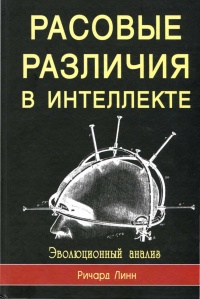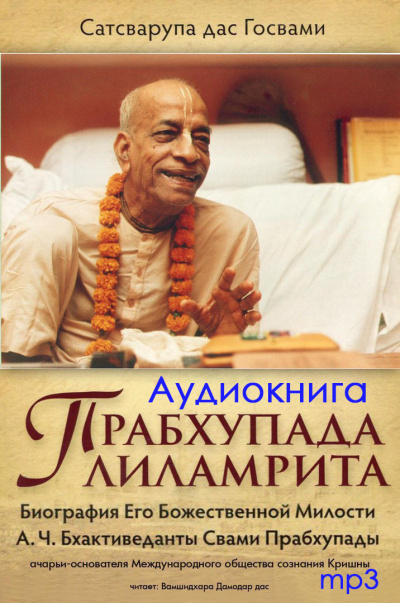Читать книгу - "Расовые различия в интеллекте. Эволюционный анализ - Ричард Линн"
Аннотация к книге "Расовые различия в интеллекте. Эволюционный анализ - Ричард Линн", которую можно читать онлайн бесплатно без регистрации
Cole, S. (1965). Races of Man. London: Her Majesty’s Stationery Office.
Coleman, J. S. (1966). Equality of Educational Opportunity. Washington, D.C.: U. S.
Office of Education.
Colom, R., Garcia, L. R, Juan-Espinoza, М., and Abad, R (2002). Null differences in general intelligence: evidence from the WAIS-R. Spanish Journal of Psychology, 5, 29–35.
Colom, R., Juan-Espinosa, М., Abad, R, and Garcia, L. R (2000). Negligible sex differences in general intelligence. Intelligence, 28, 57–68.
Colom, R., and Lynn, R. (2004). Testing the developmental theory of sex differences in intelligence on 12–18 year olds. Personality and Individual Differences, 2004, 36, 75–82.
Coombs, L. M. (1958). The Indian Child Goes to School. Washington, D.C.: U. S. Department of the Interior, Bureau of Indian Affairs.
Coon, C. S., Gam, S. М., and Birdsell, J. B. (1950). Races. Springfield, 111: Thomas.
Coon, C. S. (1962). The Origin of Races. New York, Knopf.
Coren, S. (1994). The Intelligence of Dogs: Canine Consciousness and Capability. New York: Free Press.
Costenbader, V., and Ngari, S. M. (2000). A Kenya standardisation of the Coloured Progressive Matrices. School Psychology International, 22, 258–268.
Cottereau-Reiss, P., and Lehalle, H. (1998). Comparaison des performances d’enfants Kanak et d’enfants francais dans une situation de jugements de morphismes: structuration spatiale et moulin a vent. Archives de Psychologies 66, 3-21.
Counter, S. A., Buchanan, L. H., Rosas, H. D., and Ortega, F. (1998). Neurocognitive effects of chronic lead intoxication in Andean children. Journal of Neurological Sciences, 160, 47–53.
Court, J. H. (1983). Sex differences in performance on Raven’s Progressive Matrices: a review. Alberta Journal of Educational Research, 29, 54–74.
Сох, М. V., Perara, J., and Fan, X. U. (1998). Children’s drawing ability in the UK and China. Psychologia, 41, 171–182.
Сох, М. V., Koyasu, М., Hranamu, H., and Perara,]. (2001). Children’s human figure drawings in the UK and Japan: the effects of age, sex and culture. British Journal of Developmental Psychology, 19, 275–292.
Craig,]. D. (1974). A Study of the Education and Abilities of Young Australian Male Adults. Australian Department of Labor Research Report. Canberra: Government Printing Service.
Cra vioto, J. (1966). Malnutrition and behavioural development in the pre-school child. In National Academy of Sciences. Pre-school Child Malnutrition. Washington, D.C.
Cravioto, J., Birch, Н. G., Licardie, Е., Resales, L., and Vega, L. (1969). Ecology of growth and development in a Mexican pre-industrial community. Report 1: Method and findings from birth to one month of age. Monographs of the Society for Research in Child Development, vol. 35, no. 129.
Crawfurd, J. (1863). On the antiquity of man, from the evidence of language. Transactions of the Ethnographic Society of London, 1, 170–181.
Cropley, A. J., and Cardey, R. M. (1975). Contact with the dominant culture and
cognitive competence in Canadian Indians and whites. Canadian Journal of Behavioral Science, 7, 328–238.
Cundick, B.P., Gottfredson, D.K., and Willson, L. (1974) Changes in scholastic achievement and intelligence of Indian children enrolled in a foster placement program. Developmental Psychology, 10, 815–820.
Curr, E. M. (1887). The Australian Race. Melbourne: Government Printer.
Cutler, R. G. (1976). Evolution of longevity in primates. Journal of Human Evolution, 5, 169–202.
Dague, P., Garelli, М., and Lebettre, A. (1964). Recherches sur l'echelle de maturite mentale de Colombia. Revue de Psychologie Applique, 14, 71–96.
Daley, Т. C., Whaley, S. E., Sigman, M. D., Espinosa, M. P., and Neuman, C. (2003). IQ on the rise: the Flynn effect in rural Kenyan children. Pychological Science, 14, 215–219.
Dan, L., Yu, J., Vandenberg, S. G., Yuemei, Z., and Caihong, T. (1990). Report on Shanghai norms of the Chinese translation of the Wechsler Intelligence Scale for Children-Revised. Psychological Reports, 67, 531–541.
Dasen, P. R., de Lacey, P. R., and Seagrim, G. N. (1973). Reasoning ability in adopted and fostered Aboriginal children. In G. E. Kearney, P. R. de Lacey, and G. R. Davidson (1973). The Psychology of Aboriginal Australians. New York: Wiley.
Davidson, G. R. (1974). Linguistic determinants of choice reaction time among
Aborigines and white Australians. Journal of Cross-Cultural Psychology, 5,199–210.
Davies, М., and Hughes, A. G. (1927). An investigation into the comparative intelligence and attainments of Jewish and non-Jewish school children. British Journal of Psychology, 18, 134–146.
Dawkins, A., and Snyder, R. (1977). Disadvantaged junior high school students compared with norms of the Seashore tests. Journal of Research on Music Education, 20, 438–444.
Dawkins, R. (1988). The Blind Watchmaker. London, UK: Penguin.
Dawkins, R., and Krebs, J. R. (1979). Arms races within and between races. Proceedings of the Royal Society, 205B, 489–511.
Darwin, C. (1868). The Variation of Animals and Plants under Domestication. London: Murray.
Dawson, I., Colder, R. Y, and Jonas, E. G. (1982). Birthweight by ges-tational age and its effect on perinatal mortality in white and in Pun-jabi births. British Journal of Obstetrics and Gynaecology, 89, 896–899.
Dayi, E., Okuyan, М., and Tan, U. (2002). Predictability of hand skill and cognitive abilities from craniofacial width in right and left-handed men and women: relation of skeletal structure to cerebral function. International journal of Neuroscience, 112, 383–412.
Deary, I. J. (2000). Looking Down on Human Intelligence. Oxford, UK: Oxford University Press.
De Jong, M. J. (1988). Ethnic origin and educational careers in Holland Netherlands Journal of Sociology, 24, 65–75.
De Jong, M. J., and van Batenburg, T. A. (1984). Etnische heromst, intelligentic en schoolkeuzeadvies. Pedagogische Studien, 61, 362–371.
De Lacey, P. R. (1971a). Classificatory ability and verbal intelligence among high-contact aboriginal children and low socio-economic status white Australian children. Journal of Cross-Cultural Psychology, 3, 393–396.
De Lacey, P. R. (1971b). Verbal intelligence, operational thinking and environment in part — Aboriginal children. International Journal of Psychology, 23, 145–149.
Прочитали книгу? Предлагаем вам поделится своим впечатлением! Ваш отзыв будет полезен читателям, которые еще только собираются познакомиться с произведением.
Оставить комментарий
-
 Гость Алла10 август 14:46
Мне очень понравилась эта книга, когда я её читала в первый раз. А во второй понравилась еще больше. Чувствую,что буду читать и перечитывать периодически.Спасибо автору
Выбор без права выбора - Ольга Смирнова
Гость Алла10 август 14:46
Мне очень понравилась эта книга, когда я её читала в первый раз. А во второй понравилась еще больше. Чувствую,что буду читать и перечитывать периодически.Спасибо автору
Выбор без права выбора - Ольга Смирнова
-
 Гость Елена12 июнь 19:12
Потрясающий роман , очень интересно. Обожаю Анну Джейн спасибо 💗
Поклонник - Анна Джейн
Гость Елена12 июнь 19:12
Потрясающий роман , очень интересно. Обожаю Анну Джейн спасибо 💗
Поклонник - Анна Джейн
-
 Гость24 май 20:12
Супер! Читайте, не пожалеете
Правила нежных предательств - Инга Максимовская
Гость24 май 20:12
Супер! Читайте, не пожалеете
Правила нежных предательств - Инга Максимовская
-
 Гость Наталья21 май 03:36
Талантливо и интересно написано. И сюжет не банальный, и слог отличный. А самое главное -любовная линия без слащавости и тошнотного романтизма.
Вторая попытка леди Тейл 2 - Мстислава Черная
Гость Наталья21 май 03:36
Талантливо и интересно написано. И сюжет не банальный, и слог отличный. А самое главное -любовная линия без слащавости и тошнотного романтизма.
Вторая попытка леди Тейл 2 - Мстислава Черная





